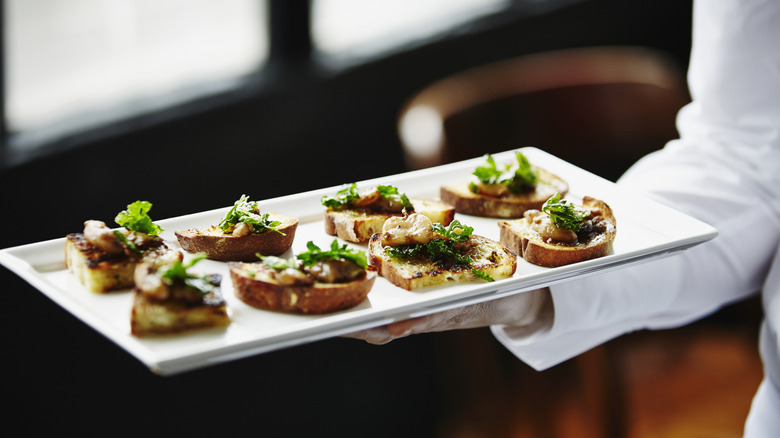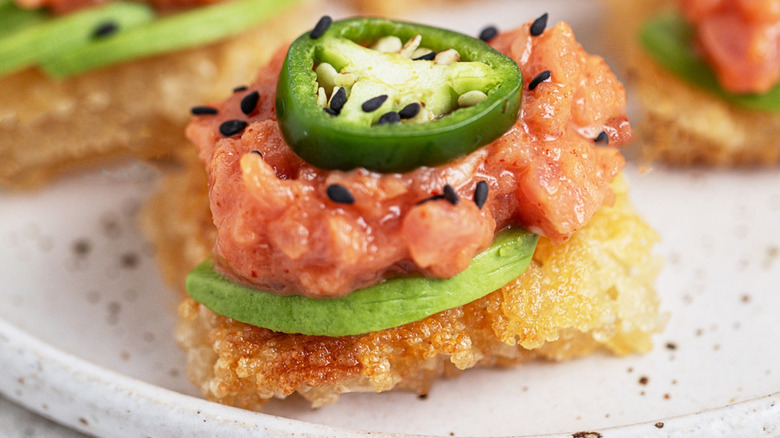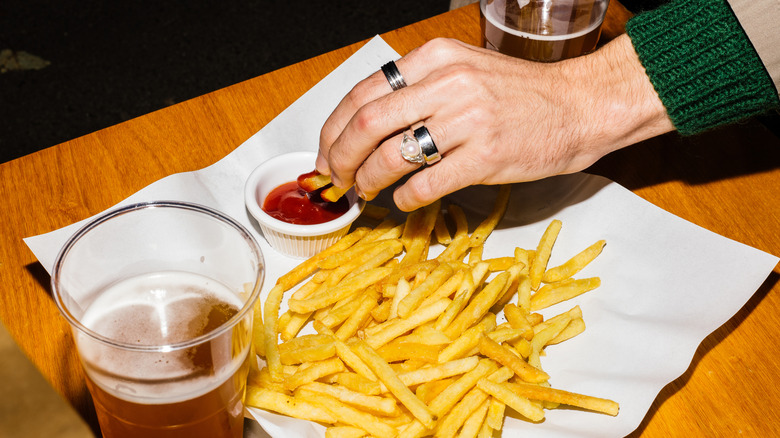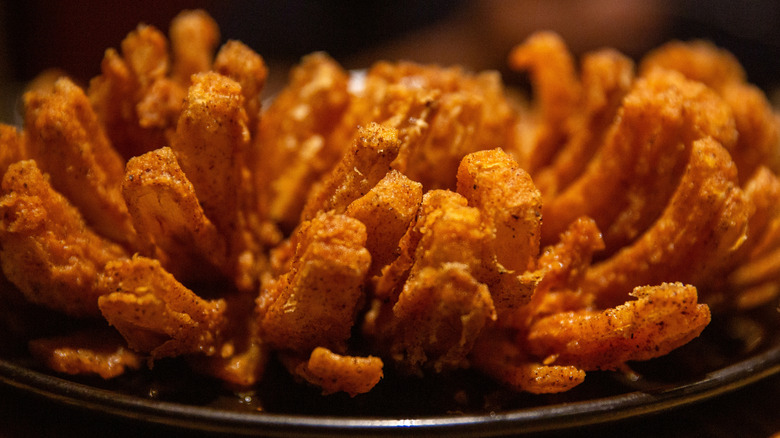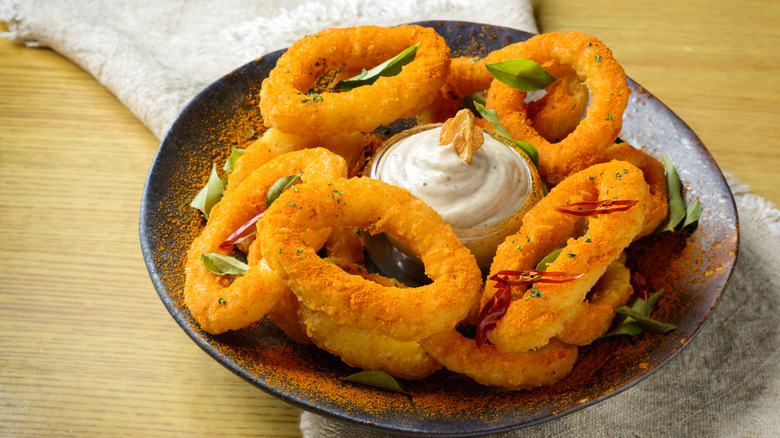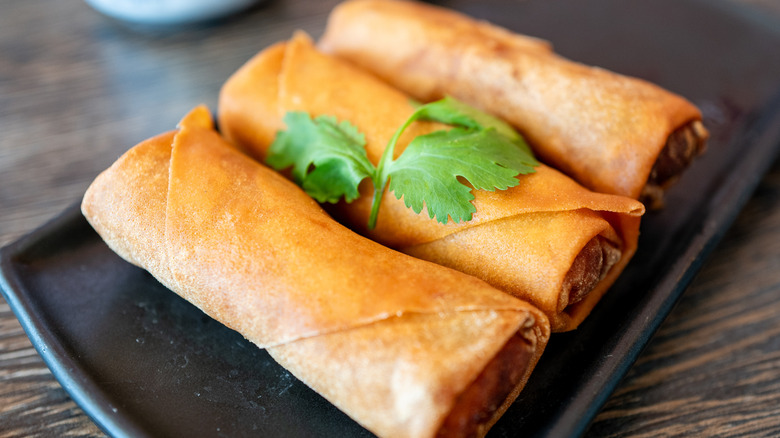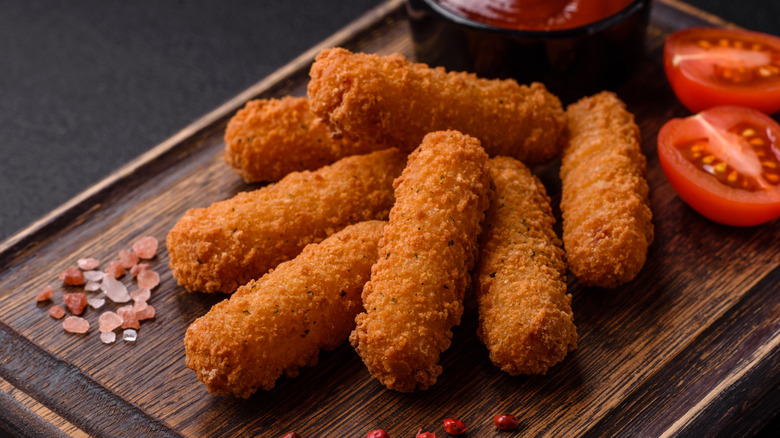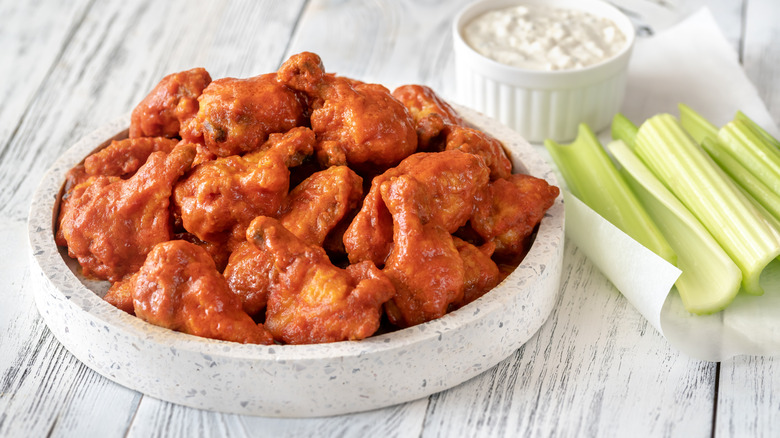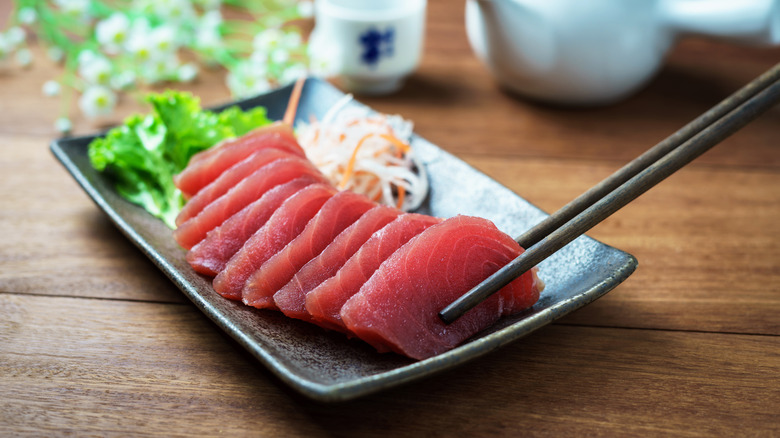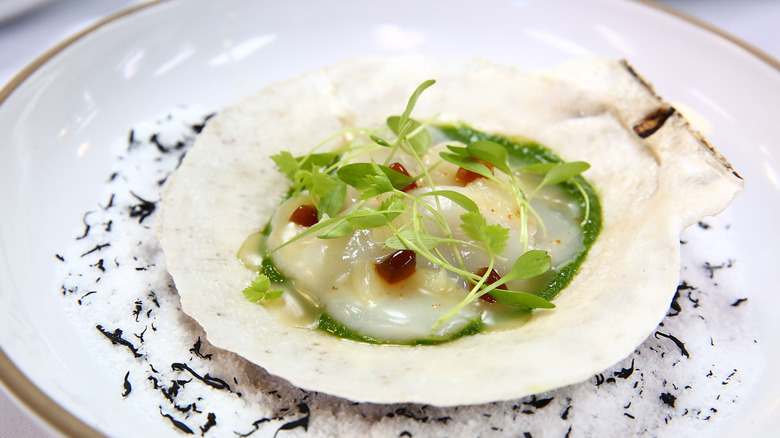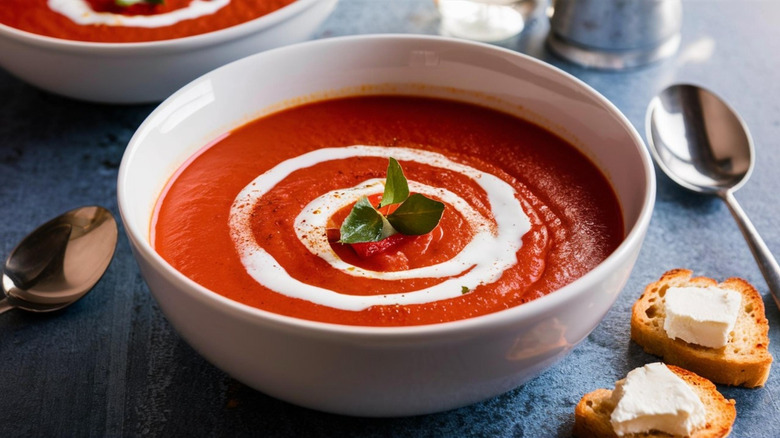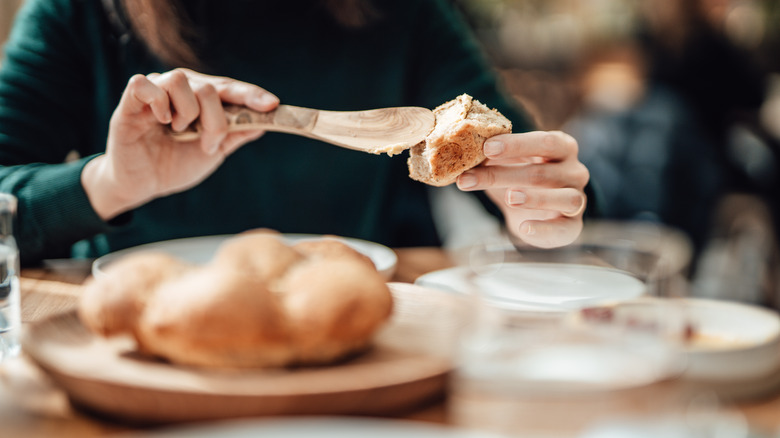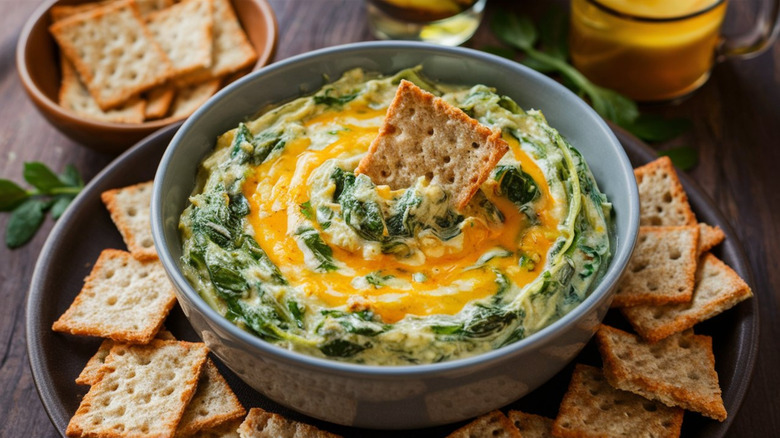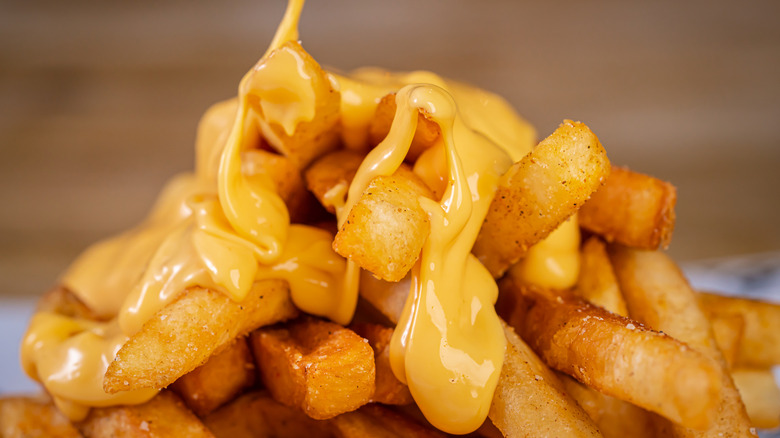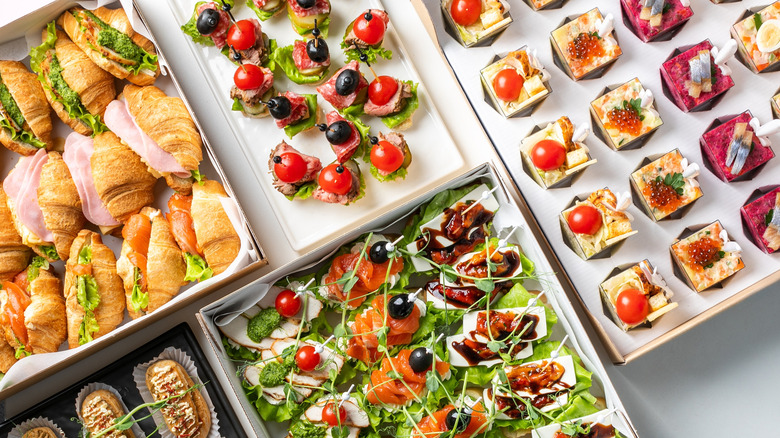You Should Always Skip These Appetizers When Dining Out, According To Chefs
While the entrée is always considered the star of the show when dining out, many can agree that, sometimes, an appetizer can shine just as brightly. Whether you're dining at a higher-end restaurant or just at your local chain eatery, the right appetizer can get your meal off to a great start.
However, some appetizers are better than others, not only from a taste perspective, but also due to the quality of ingredients used in the appetizers at many restaurants, or due to nutritional content and dietary concerns. To get a behind-the-scenes perspective as to what appetizers you should always skip when dining out, we spoke to a series of chefs, as well as healthcare professionals in the nutrition space, to get their opinions. You can find their credentials in the methodology slide at the end of this article — but here are their top tips on menu items to avoid.
Tuna crispy rice
This appetizer is most often associated with the famed Japanese restaurant, Nobu, and you'll find plenty of recipes online that claim they copy the restaurant's recipe for this appetizer as closely as possible. While you can order the dish at other Japanese restaurants beyond Nobu, the concept is pretty much the same wherever you go: crispy, fried rice cakes are topped with raw tuna mixed in a spicy sauce, avocado, jalapeno, and sesame seeds.
However, while this appetizer may have a large fan base, it's not always the best thing to order when dining out, according to Christopher Robert, executive chef at Queen Miami Beach, a Japanese steakhouse. He told us, "It tends to be overpriced for what you're getting. This dish is often made using tuna scraps that are turned into a paste, making it a high-margin item for the restaurant, but not the best value for diner." Not to mention, a plate of tuna crispy rice can clock in at a whopping 1,240 calories, as is the case at Lazy Dog, a growing restaurant chain you'll find mostly in California, but also a few other states.
French fries
No one's going to tell you that french fries are a healthy appetizer option, but are they really all that bad? Well, they can be, which is one of the reasons why registered dietitian nutritionist Lena Bakovic, of Top Nutrition Cooking, names them among her top appetizers to avoid when dining out.
It's not just the fact that restaurant fries are deep-fried that should make you raise an eyebrow, though. According to Joe Anthony, executive chef of Elastika in Miami, many fried restaurant foods are covered in commercial flours or corn starches, which may contain high levels of pesticides. Additionally, he points out, the most common deep-frying oils that restaurants use, like canola, vegetable, and peanut oil, can cause inflammation.
Add on that many restaurants don't change their deep-frying oil as often as they should, and you have a long list of health-related reasons to avoid an appetizer that — let's face it — can really vary in quality from restaurant to restaurant anyway. When there's a question of whether you'll get a perfectly crispy-on-the-outside, soft-on-the-inside french fry or a limp, lackluster stick of spud, do your body a favor and opt out.
Blooming onions
The blooming onion – most often associated with Outback Steakhouse, though you can find versions elsewhere, such as at Texas Roadhouse — is another fried appetizer that dietitian Lena Bakovic says to avoid, citing the high-fat cooking method, high saturated fat content, and inflammatory oils used in frying. But just how bad is the blooming onion, really?
If you order it at Outback Steakhouse, and not a copycat from another eatery, you'll get, with every serving you devour, 1,900 calories, 145 grams of fat, and 4,930 milligrams of sodium. While you likely know that most adults are recommended they eat a 2,000-calorie diet, you might not know that the American Heart Association recommends adults eat no more than 1,500 milligrams of sodium per day. That means a serving of bloomin' onion at Outback packs enough sodium to cover you for more than three days! Depending on your dietary needs, you're likewise only advised to consume 44 to 78 grams of fat per day, so about half of what your blooming onion will provide.
Onion rings
What about onion rings? Surely, they're a little bit better than a blooming onion, right? Well, dietitian Lena Bakovic still says to avoid them if you're trying to avoid excess fat, calories, and sodium.
Applebee's onion rings, for example, come with 1,330 calories, 60 grams of fat, and 3,200 milligrams of sodium. While that's not nearly as grim as the blooming onion at Outback Steakhouse, these onion rings are still not going to do you many favors. At Buffalo Wild Wings, the picture is much the same, with the chain's onion rings coming in with 1,590 calories per serving, plus 105 grams of fat, inclusive of 35 grams of saturated fat and 4.5 grams of trans fat. With 2,480 milligrams of sodium, too, they're not pulling any punches.
If you really need to get your onion ring fix, consider cooking some of your own at home — and in the air fryer instead of a deep fryer.
Spring rolls
Spring rolls may seem like a healthier, better-quality appetizer at first thought. After all, they're usually filled with fresh vegetables, and they're wrapped in rice paper, so they're even gluten-free in many instances. However, it's worth noting that not all spring rolls are the same. There are fresh spring rolls, which are more likely to include fresh ingredients and be served with a dipping sauce, un-cooked. Then, there are fried spring rolls, deep-fried just like any other deep-fried appetizer. For that reason, dietitian Lena Bakovic explains, avoid them when dining out.
That said, spring rolls are a far more health-forward option than many of the other to-be-avoided appetizers on this list. For example, at Panda Express, the vegetable spring rolls come in servings of two, for 240 calories total and 14 grams of fat. That's way more palatable than onion rings. At P.F. Chang's, it's a similar story, with the restaurant's rolls clocking in at 350 calories, 16 grams of fat, and 450 milligrams of sodium.
Mozzarella sticks
They may be a favorite at pizza parlors and Italian eateries now, but the mozzarella stick isn't even Italian. Instead, the mozzarella stick's origins can be traced to 14th-century France. In the United States, they didn't really become popular until about 50 years ago. However, this appetizer's popularity doesn't negate the fact that it's potentially a poor choice.
Chef Paul Denamiel, owner and executive chef of Le Rivage, makes a good point about mozzarella sticks and why you might avoid them when dining out. "From a health perspective, think about it this way: Would you ever eat five sticks of string cheese in a row? Probably not!" he explained. "But batter them and deep fry them, and suddenly it's a party. Moderation is key."
What can you expect from mozzarella sticks at some of your neighborhood chains? At Applebee's, the mozzarella sticks rake in 860 calories per serving, along with 44 grams of fat and 2,440 milligrams of sodium. At Chili's, a six-count order of fried mozzarella will give you 1,790 calories, 109 grams of fat, and an eye-watering 5,260 milligrams of sodium. When dining out, if you really have a hankering for mozzarella sticks, just remember chef Denamiel's theory — and then maybe eat just one or two sticks.
Chicken wings or strips
While chicken wings and strips are a go-to appetizer at sports bars and similar casual restaurants, registered dietitian Deloris M. Gibson with Penn Highlands Healthcare, cautions diners to stay away from this deep-fried, high-fat food that's often paired with a high-fat sauce. Instead, she proposes swapping your chicken wings with buffalo cauliflower bites that are baked, not fried — an option that is actually becoming a little more common on restaurant menus, as brands like Chick-fil-A and Dave's Hot Chicken swap out chicken for cauliflower.
For example, at Buffalo Wild Wings, an order of cauliflower wings starts at 520 calories, compared to an order of traditional wings, which starts at 720 calories. As far as strips go, you'll see a difference in Buffalo Wild Wings hand-breaded, deep-fried tenders and its un-breaded "naked" tenders as well, with the former packing in 1,240 calories per serving and the latter cutting that down to 680 calories per serving by simply leaving the breading behind.
Want to trade out those cauliflower wings for something even healthier? You might want to consider making cucumber Buffalo wings.
Sashimi
Sashimi is another appetizer that chef Paul Denamiel says diners should skip, especially if you're trying to get the most value for your money. Often, you're paying for the plating rather than the food itself, which may be served in small portions. Some even report that, if you're eating at a high-volume sushi or sashimi restaurant, you may find that the fish is covered with ingredients that can mask the seafood's true flavor — thus allowing the restaurant to use lower-quality fish in its sashimi.
Furthermore, particularly when it comes to sashimi, which is always served raw (versus sushi, which sometimes includes cooked fish), there's an additional safety factor to consider. Eating sashimi can expose you to a variety of bacteria-caused food poisoning or parasites. While most healthy individuals can eat sashimi without worry, certain high-risk groups may want to avoid this appetizer altogether, including those with weak immune systems, children, the elderly, pregnant people, and those with a liver disorder.
Additionally, don't assume that because you live in a seaside locale that your raw fish is fresh and thus safer. You can usually trust small town sushi and sashimi, because safety all comes down to whether or not the fish was handled according to the FDA's requirements. So, before you order sashimi, think about whether this tasty appetizer is worth both the money and the potential health risks.
Crudo
Crudo is an appetizer that chef Paul Denamiel groups in with sashimi, noting that the portion sizes with this appetizer can be small, even though the price is hefty. While crudo is another raw seafood dish, it differs slightly from sashimi. "Crudo" translates to "raw" in Spanish and Italian and may refer to not just raw seafood dishes, but also raw meat dishes. Typically, the raw meat is covered in some kind of dressing. However, those are the only requirements for a dish to be considered "crudo."
While crudo isn't quite as popular as sushi in the United States, it does have a fan base, which began growing after Mario Batali introduced the concept in his restaurant, Esca, in 2000. In some restaurants, it's not on the actual menu, but it might be served as an amuse-bouche. However it's served, though, whatever the particulars with the raw ingredients chosen to star in the crudo or the dressing used atop it, you can reliably expect this little appetizer to be just that: little. As such, if you're looking to get the most for your money while dining out, skip the crudo, per chef Denamiel's suggestion.
Soup
You'll be hard-pressed to find a restaurant that doesn't have some sort of soup option on the menu, whether it's an appetizer or served as an accompaniment with your entrée. There are a few reasons why you might want to avoid the soup appetizer, though, says Chef Paul Denamiel. "Unless it's your main meal, they tend to be too filling and come with the added risk of a splash on your freshly dry-cleaned shirt. Plus, let's face it, there's no elegant way to eat soup!" he tells us.
Additionally, while some restaurant soup is pretty tasty, like Olive Garden's crowd-favorite Zuppa Toscana, you can really make most restaurant soups at home. For example, love Panera's broccoli cheddar soup? You can make a copycat Panera broccoli cheddar soup at home in a half an hour. Crave O'Charley's loaded potato soup? Again, you can make it at home with a copycat O'Charley's loaded potato soup recipe and have it on the table in under one hour.
Bread
Yes, bread can be amazing, and who's going to turn down a free basket of the stuff when it arrives at your table alongside a pat of butter? However, watch it on the bread and definitely reconsider whether you want to actively order and pay extra for it, the next time you dine out. Chef Paul Denamiel says, "Bread disguised as an appetizer — like flatbreads, bruschetta, or dips — can be deceptively filling. They're delicious but can leave you too full to enjoy the rest of your meal."
That said, if you're specifically looking out for lighter appetizer options, dietitian Deloris Gibson did tell us that a classic bruschetta can be a lighter choice. It's one that typically only consists of a few very basic, minimally processed ingredients, too. However, you'll want to definitely check the restaurant's menu for further details before committing; sometimes, bruschetta can hide a wealth of fat and sodium behind its benign exterior, as is the case at Hard Rock Café, where the bruschetta contains 1,416 calories per serving and 854 milligrams of sodium.
Spinach and artichoke dip
Yes, spinach and artichokes are both vegetables, but don't assume that just because they're leafy and green that they're all good for you once they're combined in a dip. Dietitian Deloris Gibson notes that this appetizer's ingredients — typically cream cheese, parmesan or another sharp cheese, spinach, and artichoke hearts, all mixed together and then served with tortilla chips or crispy bread — leave a lot to be desired. She says, "This choice includes higher fat ingredients — cream cheese [and other] cheese — and some caution words like 'crispy' and 'chips,' [which mean ingredients] are often fried."
As one example, the spinach and artichoke dip at Applebee's comes with 990 calories, 61 grams of fat, and 2,340 milligrams of sodium. At Olive Garden, the nutritional details are much the same, with the chain's spinach and artichoke dip boasting 1,160 calories, 81 grams of fat and 2,440 milligrams of sodium. This is one appetizer best enjoyed in moderation.
Appetizers described as cheesy
Cheesy bread. Cheesy fries. Cheesy dip. Cheese seems to be everywhere when you're sifting through a menu's appetizer options — and for good reason. Who doesn't love a cheesy snack? However, if you're trying to avoid unhealthy appetizers, dietitian Deloris Gibson recommends looking out for terms like "cheesy" and weighing an appetizer's pros and cons before ordering.
In fact, there are a lot of terms on menus that can clue you in that an appetizer might not be all that healthful. Gibson explains, "Use caution with terms like crunchy, crispy, battered, breaded, buttered, creamy, cheesy, alfredo or 'in a cheese sauce.' Even looking for a basic descriptive word like 'rich' can be a big clue to use caution. Rarely choose these foods and do so only in small portions."
In contrast, there are words you can look out for on menus that may be a clue that an appetizer is a good choice. Green flag terms, according to Gibson, include baked, broiled, grilled, poached, roasted, steamed, and stir-fried.
Methodology
To compile our list of the worst appetizers to order when dining out, we spoke to a mix of chefs and healthcare professionals to get their opinions based on factors such as quality, value, nutrition, and more. We spoke with Paul Denamiel, owner and executive chef of Le Rivage; Christopher Robert, executive chef of Queen Miami Beach; Joe Anthony, executive chef of Elastika; Deloris M. Gibson MHS, RDN, CDCES, Penn Highlands Healthcare; and Lena Bakovic, MS, RDN, CNSC, Top Nutrition Coaching.
